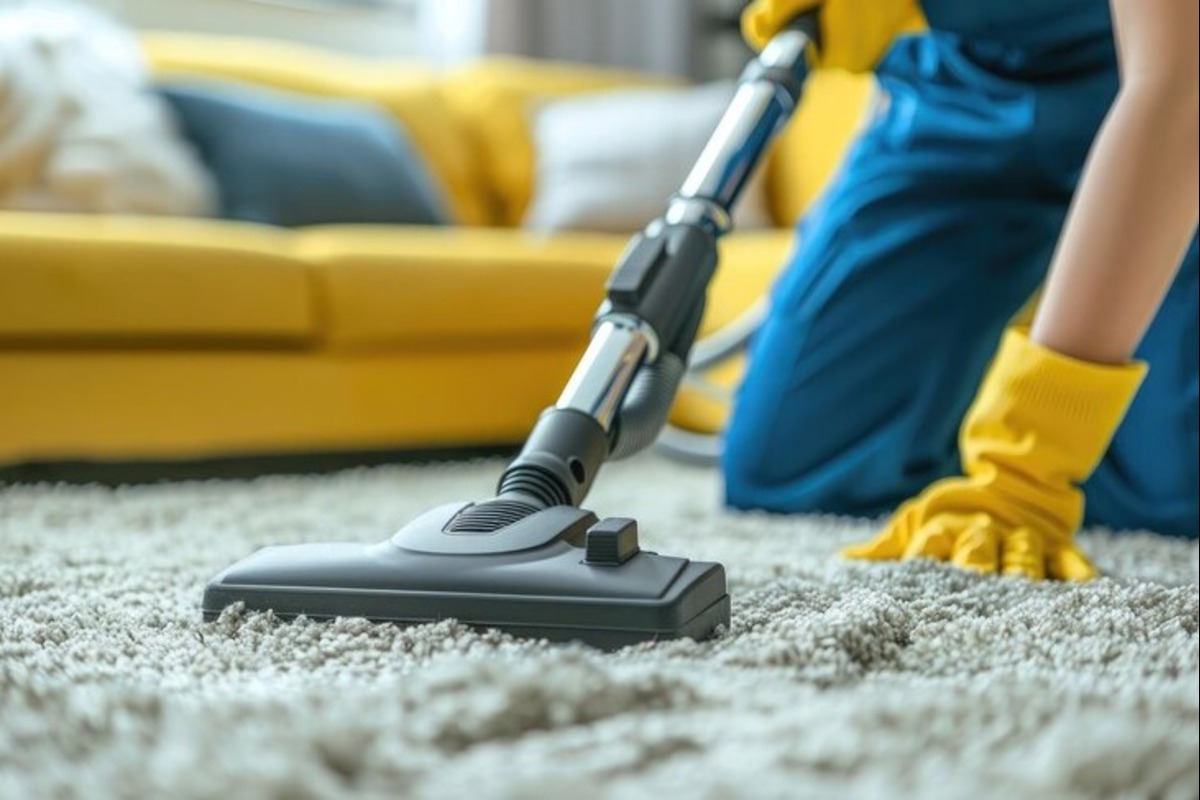Table of Contents
- Introduction: Importance of Clean Carpets
- How Carpets Trap Dirt and Allergens
- The Chemistry of Cleaning Agents
- Pressure and Temperature: Keys to Success
- Fiber Specific Techniques
- Environmental Considerations in Carpet Cleaning
- Common Myths Debunked
- Conclusion: Achieving Optimal Cleanliness
Introduction: Importance of Clean Carpets
Carpets do more than cover floors; they create a warm, inviting space in homes. Yet, their aesthetic and functional benefits come with the responsibility of keeping them clean. Clean carpets are essential for aesthetic appeal and health reasons, as they contribute to better air quality and reduce the risk of allergies. Among various methods, carpet steam cleaning stands out as a technique that efficiently cleans carpets while maintaining the integrity of the fibers. Understanding the science behind these methods can significantly enhance the efficacy of your cleaning routine.
Consistent carpet upkeep enhances an area’s aesthetic appeal while also extending the carpet’s lifespan. If not carefully eliminated, dirt and debris can damage the carpet fibers over time. This is where evidence-based cleaning methods become essential. The proper techniques and products can make the cleaning process highly effective and environmentally friendly.
How Carpets Trap Dirt and Allergens
Carpets, particularly those with thick piles, are magnets for dust, allergens, and other microscopic debris. Their fibrous nature effectively captures particles that float around in the indoor environment. While this feature is advantageous in reducing airborne particles, it also means that carpets can become hotspots for allergens if not cleaned regularly. The build-up of these contaminants may result in health problems, especially for those suffering from respiratory conditions or allergies. One effective way to address this issue is through regular residential carpet cleaning, which targets the embedded debris that routine vacuuming may miss. Comprehending how carpets capture these pollutants is essential—tiny particles are mainly ensnared at the surface. Yet, they can gradually penetrate the carpet fibers, complicating their removal. By integrating regular cleaning techniques, such as vacuuming with a HEPA filter, alongside professional cleaning services, homeowners can significantly diminish the accumulation of dirt and allergens, thereby fostering a healthier living space.
The Chemistry of Cleaning Agents
The efficacy of carpet cleaning is significantly influenced by the cleaning agents employed. Various stains necessitate distinct methods; thus, comprehending the chemistry of these agents is essential. For example, enzymatic cleaners break down proteins in organic stains, including food spills and pet accidents. Conversely, surfactants reduce the surface tension between dirt and carpet fibers, facilitating grime removal.
Using the right cleaning agents is critical to avoid damaging carpets during the cleaning process. Selecting a cleaner specifically designed for a particular type of stain can prevent the overuse of chemicals and inefficiency in cleaning. The science behind these substances allows for targeting stains at the molecular level, ensuring cleanliness and preserving the carpet’s material integrity.
Pressure and Temperature: Keys to Success
One of the most effective deep carpet cleaning methods is steam cleaning, which combines high temperature and pressure. This method injects hot steam into the carpet fibers, which loosens and extracts dirt, bacteria, and allergens. The heat effectively kills bacteria, mites, and other allergens, sanitizing the carpet without harsh chemicals. For more on effective pressure cleaning techniques, visiting websites such as how to pressure wash a house can provide additional insights.
Steam cleaning’s dual approach, involving heat and pressure, makes it a highly effective cleaning method. The steam penetrates deeply, ensuring a thorough cleaning beyond the surface level. This method is not only effective in removing embedded dirt but also helps revitalize carpets, bringing out their original texture and color.
Fiber Specific Techniques
Understanding the type of fiber your carpet is made from can dictate the cleaning technique required. For instance, natural fibers such as wool tend to be sensitive to excessive moisture and certain chemicals. Wool carpets require gentle cleaning methods to avoid shrinking or damaging the fibers.
Employing the correct cleaning techniques based on fiber type helps maintain the carpet’s appearance over time. Running a simple fiber test before choosing your cleaning method can save you from costly mistakes and preserve the life and beauty of your carpets. Knowledge about fiber-specific care can make all the difference in extending the durability and look of your carpeting.
Environmental Considerations in Carpet Cleaning
The demand for environmental sustainability has led to an increase in eco-friendly cleaning products. These products are designed to clean carpets effectively while minimizing ecological impact. Eco-friendly solutions usually contain biodegradable ingredients that do not harm the ecosystem or contribute to pollution. Exploring resources like the EPA’s guide to identifying greener carpet options offers valuable insights into making more informed, environmentally responsible choices when selecting and maintaining carpet materials. Adopting green cleaning practices benefits both the environment and the health of household members. Reducing exposure to harsh chemicals makes these methods safer for pets and children and promotes better indoor air quality. Implementing eco-conscious cleaning practices underscores a commitment to a sustainable living environment.
Common Myths Debunked
Several misconceptions about carpet cleaning continue to circulate. One popular myth is that frequent cleaning can wear out carpets. In truth, regular cleaning helps prolong a carpet’s life by preventing dirt build-up that can cause wear and tear. Another myth is that it is impossible to remove once a stain sets. While some stains are stubborn, many can be treated effectively with the proper techniques.
Gaining insight into the realities of these myths can result in more knowledgeable and efficient carpet maintenance techniques. Clarifying these misunderstandings promotes consistent upkeep and guarantees that carpets stay in optimal condition for an extended period.
Conclusion: Achieving Optimal Cleanliness
Understanding the science behind effective cleaning techniques is key to keeping carpets clean and maintaining a healthy home. Each step contributes to optimal cleanliness, from selecting the right agents and tools to knowing your carpet’s fiber type. Integrating eco-friendly practices preserves your carpet’s integrity and promotes environmental health. A comprehensive approach to carpet care will ensure your home remains a welcoming and safe space for family and friends.











